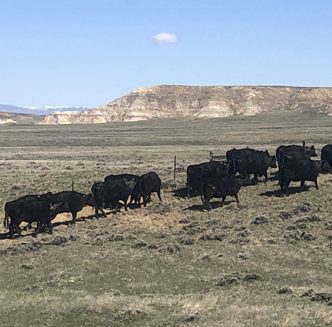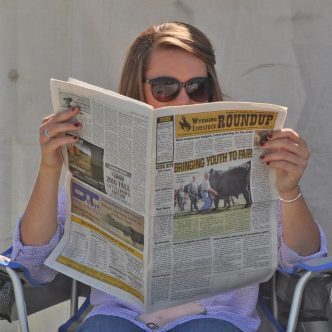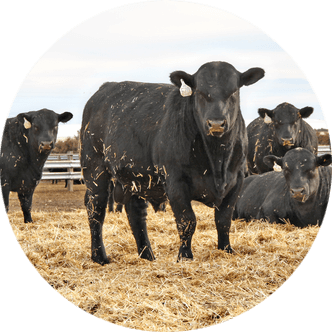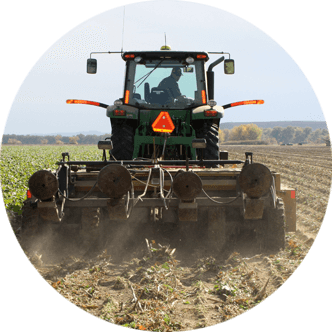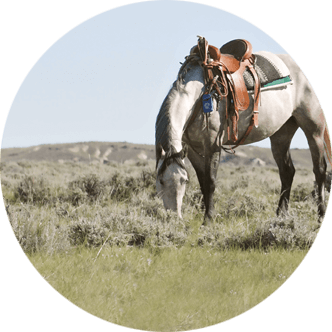UW webinar features LGD discussion with Cat Urbigkit
The second installment of the University of Wyoming (UW) Extension Sheep Task Force’s Predator Management Webinar Mini Series took place on March 4, with a focus on livestock guardian dogs (LGD).
The webinar featured guest speaker Cat Urbigkit, a Sublette County rancher, author and president of the Wyoming Wool Growers Association, who shared her extensive experience using LGDs on her own ranch and researching LGD breeds around the world.
Predator pressure
Urbigkit noted it is important for producers to recognize the warning signs of predators in a herd or flock in order to properly address the problem.
Signs may include tight bunching, missing animals, the presence of ravens and magpies, females with tight bags and physical signs such as scat, tracks or fur.
Drastic changes in herd and flock behavior may also be an indication of predator pressure.
Specifically, Urbigkit said animals – even those that are used to LGDs – will act panicked in their presence, may suddenly tear through otherwise sound fences and may suddenly refuse to enter certain areas or express hesitancy to an area they are accustomed to.
When predation is suspected, Urbigkit encouraged producers to locate kill and feeding sites to determine the responsible predator.
She explained bears and mountain lions will move and bury their kills, while fox, bobcats and coyotes are only able to carry away small lambs. Coyotes are also known for scattering carcasses and remains.
“Some large carnivore kills can be confusing or there will be multiple species feeding on one kill, so it is really important to get help from an expert with Wildlife Services or the Wyoming Game and Fish Department,” she advised.
Breed comparison
While LGDs have certainly proven effective in reducing livestock depredation, Urbigkit noted it is important to match breeds with the kind of predators an operation is dealing with.
She explained most breeds work well to deter large cats and bears and recommends using a mix of breeds, ages and sexes for managing coyotes.
Some breeds, such as the Akbash, a big white Turkish dog from Anatolia, better understand aerial threats and are great at harassing avian predators.
For domestic dogs and wolves, Urbigkit recommends producers use more canine-aggressive breeds.
“Wolves coming into the herd must be met with an aggressive response. There has to be a negative consequence from the guard dogs for the wolves to move on,” she stated. “If there is not a negative consequence, the wolves will return and the dogs will become habituated to wolf presence, which sets the stage for depredation.”
She shared, in her experience, Great Pyrenees have not been aggressive enough to protect against wolves, and while Akbash are very active in wolf defense, hers have often been killed.
Therefore, LGDs protecting against wolves should be fitted with a spiked collar to increase their chance of survival, she noted.
While Urbigkit noted it is essential for LGDs to come from proven working lineage – not a breeding kennel – she admitted her favorite dogs, and the ones she has found the most success with, are a cross between Akbash and Central Asian Ovcharka.
“While each breed has its own behavioral characteristics, there is great variety within a single litter. The thing about LGDs is they are independent thinkers. They are bred to take action as they deem appropriate,” she stated. “So, I think it is important people don’t get too hung up on breed because really what we want is good performance.”
Pros and cons
Like anything else, LGDs come with their own set of advantages and disadvantages.
Urbigkit noted LGDs are good for keeping pastures clear of things which might otherwise attract predators, such as birthing material; having a calming influence on the flock or herd; reducing depredation and deterring predators.
With her operation situated next to an elk feedground, Urbigkit said she also uses her LGDs to keep wildlife out of haystacks and off of feed lines, which decreases potential disease transmission and helps reduce feed loss.
She also shared anecdotal evidence of instances where LGDs have been used as a conservation tool to restore endangered species and save human lives.
On the other hand, Urbigkit outlined some cons of owning a LGD.
First, she noted LGDs may limit other predator control options such as using traps, snares and poison; they bark all night; they must be fed daily and they come with a learning curve.
She also mentioned LGDs may harass humans, other dogs and wild animals, especially ungulates. However, she shared, in order to deter this behavior in her own dogs, she attaches a chain to their collars during mule deer migration season to slow dogs down and wear them out.
Additionally, Urbigkit said, “They’re a long-term commitment. You have to manage individual animals, but they are also members of a pack. Females will have heat cycles and reproduce. Major battles will occur between dogs for breeding rights. They have accidents. They get sick and die. And, just like other livestock, you’ll need to replace them on occasion.”
Getting started
For those who decide to use LGDs, Urbigkit expressed the importance of ensuring they are adequately bonded to the livestock they are supposed to protect.
“The prime bonding period for LGDs is eight to 16 weeks of age, and during this time, pups should be kept with the livestock species they will be expected to guard,” she explained. “Pups need some human socialization but not too much because they need to bond to livestock, not humans.”
Urbigkit shared, for sheep, she likes to keep belly wool from that summer’s shear to line the natal den. This helps puppies grow accustomed to the smell of her flock specifically before their eyes are even open.
Then, after a few weeks have gone by, Urbigkit introduces puppies to the sheep, either keeping them in a pen with bum lambs or gentle, older ewes.
For cattle, Urbigkit puts pups with week-old calves or keeps cattle in a pen adjacent to the dog kennel until the puppies are big enough to be around them.
“We like to put dogs with the animals they are going to bond with, but these animals need to be somewhat gentle,” she said. “You don’t want them to beat up on or tear up the pups.”
Additionally, Urbigkit said, in her experience, some LGDs go through a “terrible teenager” stage as they near two years old, where they start to chase animals or get rough.
In this case, Urbigkit recommends putting them back in a bonding pen with adult members of the species they are guarding for a couple of weeks. She reiterated using gentle livestock, but ones that are old and mature enough to reinforce respect.
When it comes to training, Urbigkit admitted she does little with her LGDs.
“The thing is, these dogs have been bred and used for thousands of years around the world, but what we like to do is try to get them socialized to scenarios we expect them to encounter later in life,” she said.
This includes getting them accustomed to the tractor or teams of horses used to feed hay, kids on bicycles, horseback riders, motorcycles, side-by-sides and other vehicles.
“We handle and pet our dogs all the time and we encourage our herders to do the same, but we generally don’t let anyone else because there is a fine line between having dogs we can easily catch and dogs that are easy to catch by people who think they need rescued,” she stated.
Urbigkit also noted her LGDs are taught a few important commands such as “no,” “go to the sheep” and their respective names.
“I also teach them to come at the sound of my whistle or the horn of my truck so we can feed them when they are out on the range,” she shared.
“A major part of training is every good thing should happen while the dogs are with their livestock,” she added. “They should be fed with their livestock, praised with their livestock, given treats with their livestock and loved on with their livestock.”
Hannah Bugas is the managing editor of the Wyoming Livestock Roundup. Send comments on this article to roundup@wylr.net.

